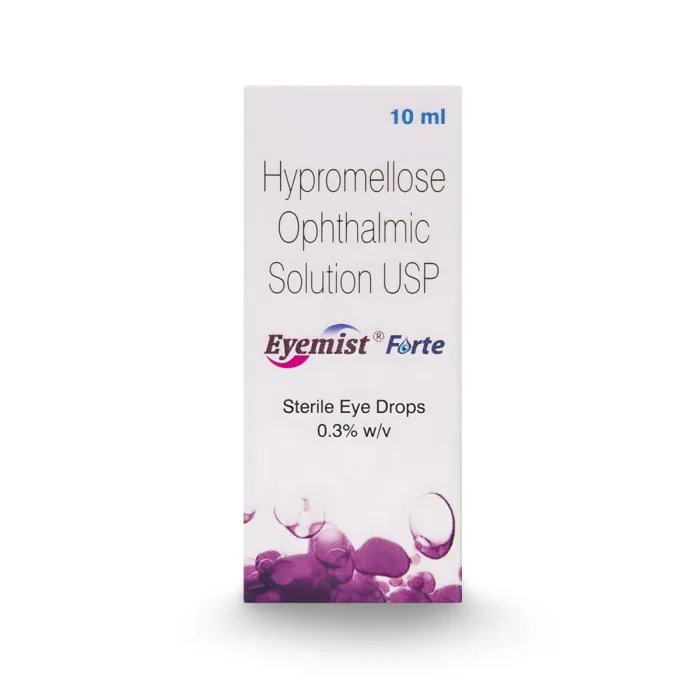Exposure Keratitis or Exposure Keratopathy is a type of Keratitis that affects the cornea in the eye.
As its name implies, Exposure Keratitis results from overexposure of the outer eye surface to the surroundings.
It is a serious eye condition and can significantly damage the eye, causing major eye discomfort.
Therefore, it becomes necessary to learn about this eye condition in detail.
Let us proceed with the article to learn about the causes, symptoms, and treatment methods of Exposure Keratitis.
Symptoms of Exposure Keratitis
Out of the various signs and symptoms of Exposure Keratitis, dry eyes are one of the most common symptoms.
Some people might also experience a foreign body sensation in the eyes due to the corneal scratching associated with Exposure Keratitis.
Besides these two signs, other symptoms of Exposure Keratitis include blurry vision, light sensitivity, eye pain, reduced vision clarity, and visibly red eyes.
However, the eye pain experienced is generally minimal due to decreased corneal sensation.
If left untreated, these Exposure Keratitis symptoms can cause further damage to the eyes.
Therefore, it is important to consult an ophthalmologist for the prescription of medications to treat Exposure Keratopathy.
Save up to 90% on your medicine bills

Eyemist Forte 10 ml

Milflox 0.5% 5 ml

Restasis 0.05% Ophthalmic Emulsion

Pred Forte 10 ml
Causes of Exposure Keratitis
As stated earlier, the main cause of Exposure Keratopathy is increased exposure of the cornea to the external environment.
This may happen due to certain medical conditions that prevent the eyelids from closing all the way.
In a healthy eye, the eyelids close completely and frequently, ensuring proper consistency of the tear film.
Tear Film is a fluid layer in the eye responsible for the protection and lubrication of the cornea.
However, this process of cornea protection may be impacted due to certain conditions, such as:
- Lagophthalmos, a condition that may lead to incomplete closing of the eyelids
- Facial nerve palsy, which causes eyelid paralysis
- Reduced corneal sensation due to eye infections
- Insufficient blinking due to neurotrophic diseases
- Exophthalmos, a condition leading to displacement of the eyeball
- Eyelid malposition
These conditions affect the proper closing of the eyelids, resulting in over-exposure of the eye surface.
When this excessive exposure and uneven tear film result in damage to the cornea, an individual is diagnosed with Exposure Keratitis.
Exposure Keratitis Treatment
 Source: pixelshot
Source: pixelshotThe treatment for Exposure Keratitis depends on the cause and severity of your eye condition.
For mild Exposure Keratitis, artificial tears and lubricating eye drops may help relieve the symptoms.
In some cases, ointments containing antibiotics such as Erythromycin may be used to eliminate possible infections due to the exposure.
If you have a scratched cornea, your doctor may also suggest using bandages or scleral contact lenses with antibiotic coverage.
Additionally, physical therapies such as eye tapping or passive eyelid closure may be needed to minimize further damage.
However, if this condition leads to allergic or bacterial eye infections, you may need anti-allergic or antibiotic eye drops for proper treatment.
In severe cases, surgical methods such as Tarsorrhaphy or eyelid reconstruction may be implemented to heal the cornea.
Remember, Exposure Keratitis is a type of Keratitis that requires medical intervention for complete and effective treatment.
Therefore, it is necessary to contact a certified ophthalmologist for effective treatment of Exposure Keratitis.
Conclusion
Exposure Keratitis is an eye condition caused when increased eye exposure leads to corneal damage.
The common symptoms include dry eyes, red eyes, light sensitivity, eye pain, and blurry vision.
Certain medical conditions, such as Lagophthalmos and facial nerve palsy, may lead to Exposure Keratitis.
For treatment, artificial tears and lubrication eye drops are used initially to ease the discomfort.
Other treatment methods include bandages, scleral contact lenses, and physical therapies such as eye tapping.
If the over-exposure leads to eye infections, anti-allergic or antibiotic drops may be needed.
Severe cases may need surgery like Tarsorrhaphy.
As Exposure Keratitis requires medical attention for proper treatment, consult a certified ophthalmologist as soon as you observe any symptoms.
After assessing your eye, they will suggest the proper medications for your treatment.

Frequently Asked Questions
Can I have dry eye inflammation due to Exposure Keratitis?
Yes, Exposure Keratitis may lead to dry eyes due to the tear film disruption caused by the increased eye exposure.
Therefore, it is recommended to seek timely treatment of red eyes from a certified eye doctor.
See our Recommendations
What are the signs of Exposure Keratitis?
Common signs of Exposure Keratitis include incomplete blinking, decreased tear production, or visible scratches on the cornea.
It is best to consult an eye doctor for the proper diagnosis of Exposure Keratitis.
See our Recommendations
What are the complications of Exposure Keratitis?
The complications of Exposure Keratitis include corneal scarring, corneal ulcers, perforation, or complete vision loss.
It is a serious eye condition that needs timely medical attention from a trusted eye doctor.
See our Recommendations
What is the cause of Exposure Keratitis?
Exposure Keratitis can be caused by improper closing of eyelids due to medical conditions such as Lagophthalmos and eyelid malposition.
It is important to treat these underlying conditions to treat Exposure Keratitis effectively. Therefore, visit a trusted ophthalmologist for accurate medical guidance.
See our Recommendations
Can Exposure Keratitis cause blindness?
Yes, Exposure Keratitis can lead to blindness in severe cases. Therefore, seeking prompt treatment for this eye condition from a licensed ophthalmologist is important.
See our Recommendations
Cheap Medicine Shop only refers to credible, authoritative sources for our content. If you’re curious about how we ensure the integrity of our content, we encourage you to read our Content Information Policy.














